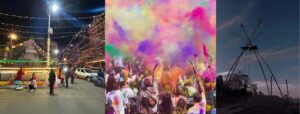Welcome to the adventure of a lifetime! May is one of the best times to embark on the thrilling Annapurna Base Camp Trek, where the snow-capped Himalayan Mountains and lush green forests will leave you breathless in more ways than one.
As you start your journey, you’ll be greeted by the stunning landscapes of the Annapurna region with towering peaks and rolling hillsides that stretch as far as the eye can see. The trail will take you through charming traditional villages where you’ll encounter warm and welcoming locals who will share their culture and way of life with you.
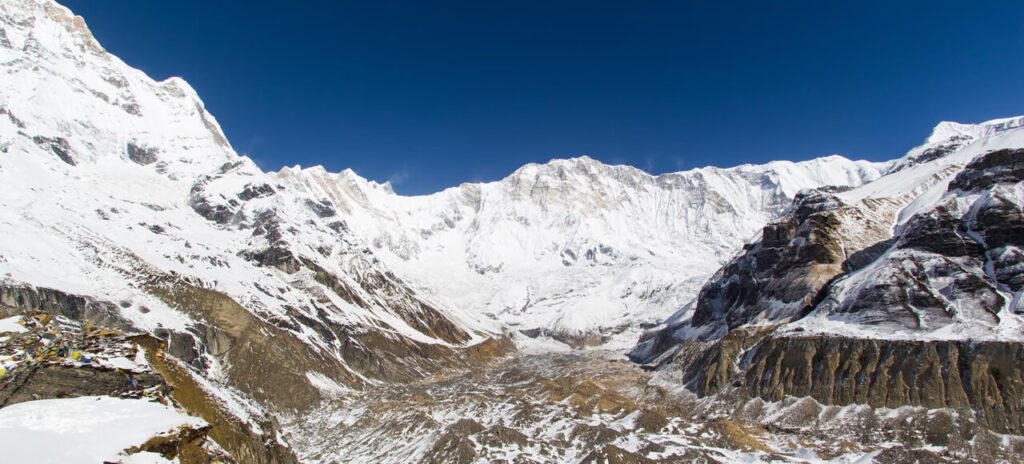
As you continue to climb higher and higher, you’ll be amazed by the stunning views of the snow-capped peaks of Annapurna, Dhaulagiri, and Machhapuchhre (Fishtail) looming majestically above you. You’ll also be surrounded by a rich and diverse array of flora and fauna including rhododendron forests, blooming wildflowers, and rare Himalayan wildlife such as the elusive snow leopard.
At night, you’ll relax in cozy teahouses, enjoying hearty meals and swapping stories with fellow trekkers from all around the world. And as you wake up each morning, you’ll be greeted by the breathtaking sunrise over the mountains filling you with a sense of awe and wonder.
So pack your bags, lace up your boots, and get ready for an adventure of a lifetime on the Annapurna Base Camp Trek in May!
Weather Conditions at Annapurna Base Camp Trek in May
May is generally considered one of the best months to trek in the Annapurna region. The weather is usually stable and clear with warm temperatures during the day and cooler nights. The average daytime temperature ranges from 12 to 18 degrees Celsius, while the nighttime temperature can drop down to around -5 degrees Celsius.
The chances of precipitation are relatively low during May with an average of only 4 rainy days in the month. However, it is important to note that weather conditions can change quickly in the mountains, and trekkers should be prepared for unexpected changes.
Despite the favorable weather conditions it is always a good idea to check the weather forecast before embarking on a trek to Annapurna Base Camp.
The crowd on the trail of Annapurna Base Camp Trek in May
Annapurna Base Camp is a popular trekking destination in Nepal attracting many visitors every year, especially during the peak season of spring and autumn. May is one of the busiest months in terms of crowds in the Annapurna region and the Annapurna Base Camp trek is no exception. In May, the weather in the Annapurna region is generally favorable for trekking with clear skies and mild temperatures. The trail is also at its best with blooming rhododendron forests and lush greenery adding to the scenic beauty of the trek. As a result, many trekkers choose to visit during this time making it a popular month for the Annapurna Base Camp trek.

The crowd at Annapurna Base Camp in May can be overwhelming, especially during the peak season. The trekking trail and the base camp can get very crowded with hundreds of trekkers, guides, and porters converging on the area each day. The accommodation and dining facilities can also be stretched to capacity during this time with long wait times and limited options.
However, the atmosphere in the Annapurna Base Camp in May is also lively and festive. The base camp is a melting pot of different cultures and nationalities with trekkers from all over the world coming together to experience the beauty of the Himalayas. The teahouses and lodges are abuzz with conversation and laughter and the shared experience of the trek creates a sense of camaraderie among the trekkers.
Route of Annapurna Base Camp
Here is a brief overview of the route for the Annapurna Base Camp Trek:
Day 1: Arrival in Kathmandu
Your trek starts with your arrival in Kathmandu, the capital city of Nepal. You will be picked up from the airport and transferred to your hotel.
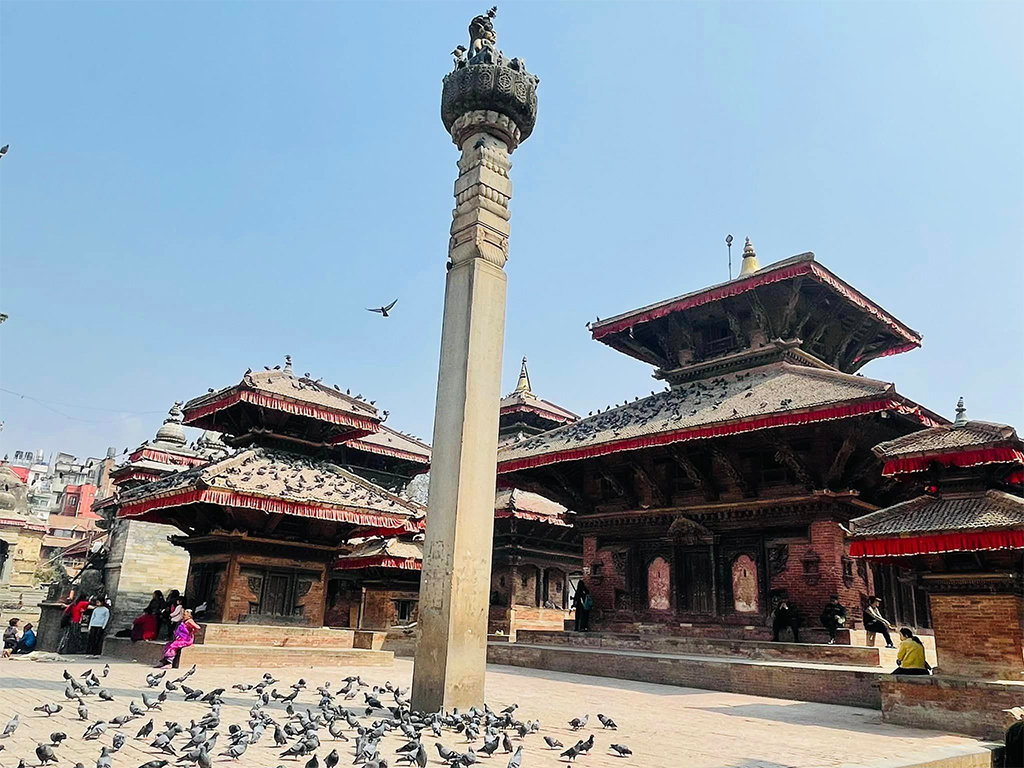
Day 2: Drive from Kathmandu to Pokhara
On the second day, you will drive from Kathmandu to Pokhara, which takes around 6-7 hours. Pokhara is a beautiful city located on the shores of Phewa Lake, and it serves as the starting point for the trek.

Day 3: Pokhara to Nayapul, and Trek to Tikhedhunga
On the third day, you will drive to Nayapul, which takes around 1.5 hours, and then start trekking toward Tikhedhunga. The trek is relatively easy, and you will pass through small villages, terraced fields, and lush forests.
Also Check: Annapurna Base Camp Trek in April
Day 4: Tikhedhunga to Ghorepani
On the fourth day, you will trek from Tikhedhunga to Ghorepani, which takes around 7-8 hours. The trail is steep and challenging, but the stunning views of the Annapurna and Dhaulagiri ranges make it worth it.

Day 5: Hike to Poon Hill and Trek to Tadapani
On the fifth day, you will wake up early in the morning and hike to Poon Hill to watch the sunrise over the Himalayas. After enjoying the stunning views, you will trek to Tadapani.
Day 6: Tadapani to Chhomrong
On the sixth day, you will trek from Tadapani to Chhomrong, which takes around 5-6 hours. The trail passes through rhododendron forests and offers stunning views of the Annapurna South and Machhapuchhre.
Day 7: Chhomrong to Dovan
On the seventh day, you will trek from Chhomrong to Dovan, which takes around 6-7 hours. The trail is steep and challenging, and you will pass through dense forests and small villages.
Day 8: Dovan to Machhapuchhre Base Camp
On the eighth day, you will trek from Dovan to Machhapuchhre Base Camp, which takes around 6-7 hours.
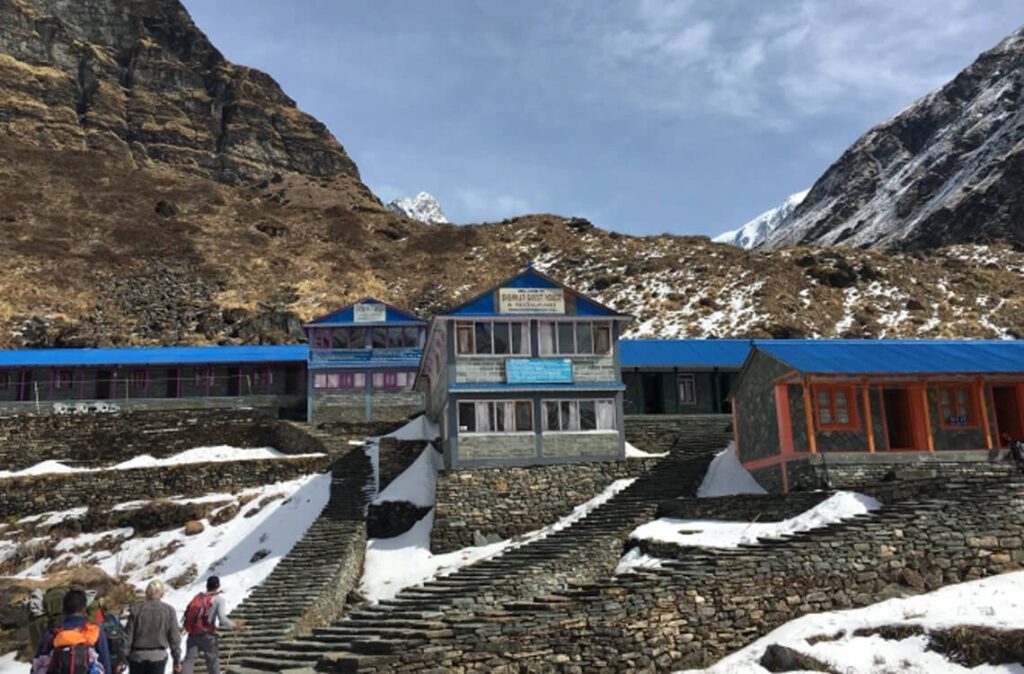
The trail is steep and challenging, but the stunning views of the Machhapuchhre (Fishtail) Mountain and the surrounding peaks make it worth it.
Day 9: Machhapuchhre Base Camp to Annapurna Base Camp
On the ninth day, you will trek from Machhapuchhre Base Camp to Annapurna Base Camp, which takes around 3-4 hours.
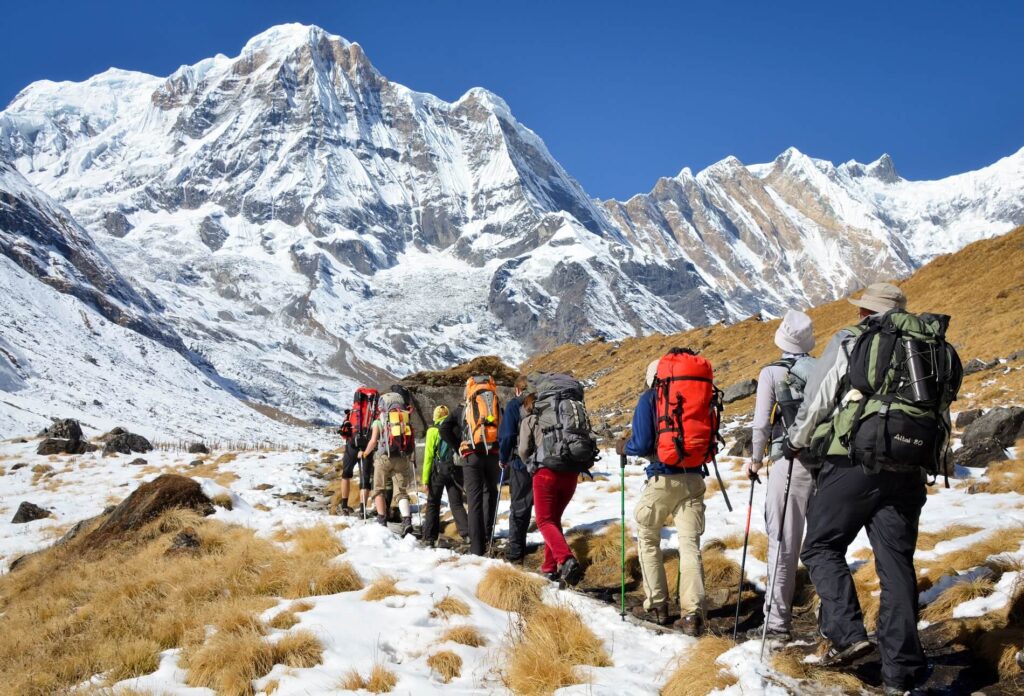
The trail is relatively easy, and you will pass through glacial moraines and snow-covered landscapes.
Day 10: Annapurna Base Camp to Bamboo
On the tenth day, you will trek back from Annapurna Base Camp to Bamboo, which takes around 7-8 hours. The trail is steep and challenging, but the stunning views of the Annapurna range make it worth it.
Day 11: Bamboo to Jhinu Danda
On the eleventh day, you will trek from Bamboo to Jhinu Danda, which takes around 5-6 hours. The trail passes through small villages.
Highlights
May’s Annapurna Base Camp Trek is an exceptional adventure guiding you through the gorgeous landscapes of Nepal’s Annapurna region. This hike showcases magnificent vistas of the majestic Himalayan summits, quaint villages, and lush verdant forests, offering an unparalleled experience. Here are some of the highlights you can expect from the Annapurna Base Camp Trek in May.
Stunning Views of the Himalayas:
The Annapurna Base Camp Trek offers some of the most stunning views of the Himalayas, including the towering peaks of Annapurna I, Annapurna South, Machhapuchhre (Fishtail), Hiunchuli, and Dhaulagiri. May is a great time to trek in this region because the weather is clear and the views are unobstructed.
Beautiful Rhododendron Forests:
May is the month when the rhododendron forests of the Annapurna region are in full bloom creating a beautiful sea of pink and red flowers. These forests are home to a variety of wildlife including monkeys, deer, and various species of birds.

Culture Experience:
The Annapurna region is home to a diverse mix of ethnic communities including Gurung, Magar, and Thakali. Trekking through these villages gives you the opportunity to experience their unique cultures and traditions including their music, dances, and festivals.
Natural Hot Springs:
You may unwind your sore muscles after a strenuous day of hiking by bathing in one of the local hot springs. It is said that these hot springs offer therapeutic qualities that might assist reduce tension and weariness.
Popular: Annapurna Base Camp Trek in February
Challenging Trekking Trails:
An excellent level of physical fitness is necessary for the difficult Annapurna Base Camp Trek. You will have to go across high-altitude passes and small mountain roads since the tracks are steep and rocky. The region’s beautiful scenery and breathtaking vistas, however, make the effort worthwhile.
Tea Houses and Local Cuisines:
There are numerous small eateries and tea houses spread out across the Annapurna region that offer delicious regional cuisine. As you savor a hot bowl of dal bhat or momos, you can also marvel at the awe-inspiring views of the Himalayas.
Flora and Fauna
The region is also known for its rich flora and fauna, particularly during the month of May when the trek is most popular.
The lower elevations of the trek are filled with lush vegetation including rice and wheat fields and dense forests of rhododendrons, oaks, maples, and pines. The rhododendron forests are particularly striking during May when the trees are in full bloom and create a vibrant and colorful landscape.
As the trek gains elevation, the vegetation becomes sparser with alpine vegetation dominating the landscape. The higher altitudes are characterized by rocky terrain and patches of moss, creating a rugged and barren environment. However, even in these harsh conditions, a variety of plant species can be found including hardy shrubs and grasses.
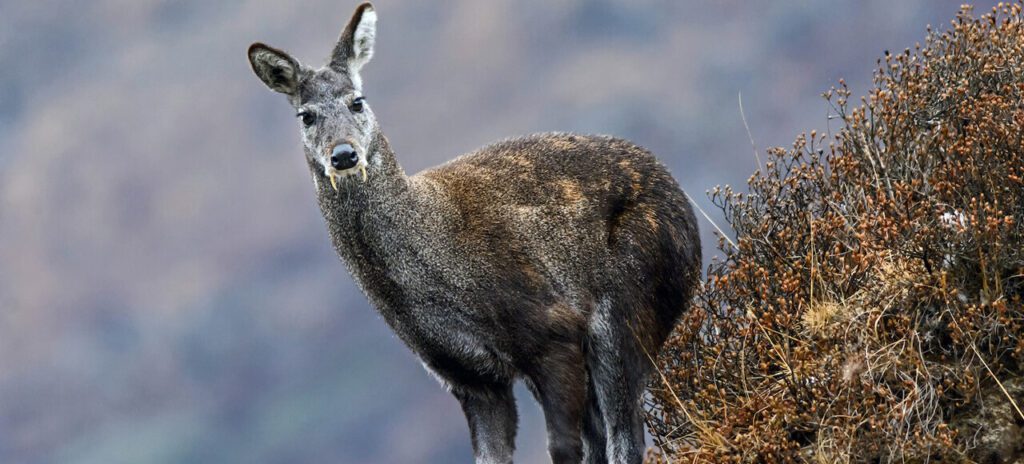
The Annapurna area boasts a wide variety of fauna including the Himalayan tahr which is easily recognizable with its shaggy coat and curved horns and is often seen grazing on the steep hillsides in the alpine regions. The region is also home to the elusive and critically endangered snow leopard which is notoriously difficult to spot. Other animal species that can be found in the area include musk deer, langur monkeys, and Himalayan black bears.
Birdwatchers will be delighted with the variety of bird species in the Annapurna region. Woodlands are home to several species such as the colorful Himalayan monal with its metallic blue-green crown and the koklass pheasant known for its unique cry. Other species that can be spotted include the Himalayan buzzard and the white-throated laughing thrush.
Merits and Demerits
May is a popular time to embark on this trek, as it falls within the peak season of hiking in Nepal. However, like any trek, there are both merits and demerits to consider when planning a trip to Annapurna Base Camp in May.
Merits
- Weather: May falls within the peak trekking season in Nepal, as the weather is generally warm and dry. This makes for clear skies and stunning views of the Himalayan Mountains.
- Blooming Rhododendrons: May is also the time when the Rhododendrons bloom, covering the hillsides with vibrant red, pink, and white flowers. This adds to the natural beauty of the trek.
- Easy to Find Guides and Porters: With the increased number of visitors finding a guide or porter is relatively easy in May. This means that you can easily hire an experienced guide to help you navigate the trail, carry your equipment, and ensure your safety.
Demerits
- High Altitude Sickness Risk: While the weather in May is generally favorable for trekking, it can also be quite warm during the day. This can increase the risk of altitude sickness which is a potentially dangerous condition that can affect hikers who ascend too quickly. It is important to acclimate slowly to the altitude, drink plenty of water, and be aware of the symptoms of altitude sickness.
- Trail Crowds: While May is less crowded than the peak season months, it is still a popular time for trekking in Nepal. This means that you may encounter more crowds on the trail, especially at popular stops such as Machhapuchhre Base Camp and Annapurna Base Camp.
- Difficulty in Finding Accommodation: With the increased number of visitors, finding accommodation can be a challenge in May. It is important to book your accommodations well in advance or be prepared to camp if necessary.
Tips for Annapurna Base Camp Trek on May
Here are some tips for Annapurna Base Camp Trek in May:
Pack for changing weather:
The Annapurna Base Camp trek takes you through a diverse range of landscapes from lush forests to barren mountain landscapes, so it’s essential to pack appropriately for the changing weather. In May, the weather can be unpredictable and temperatures can vary greatly throughout the day. It can be hot and sunny during the day but temperatures drop at night. Therefore, it’s crucial to pack layers and bring warm clothing like a fleece jacket or down jacket as well as a rain jacket in case of rain.
Start early:
Starting your trek early in the morning has many benefits. In May, the days are longer, but the weather can be hot during the midday. Therefore, starting early helps you avoid the heat and allows you to reach your destination before sunset giving you more time to rest and acclimatize along the way. It’s also a good idea to start early to avoid the crowds that can build up on the trail later in the day.
Stay hydrated:
Staying hydrated is essential when trekking at high altitudes. In May, the weather can be warm and sunny making it even more important to drink plenty of water. Carry a refillable water bottle with you and consider using water purification tablets or a filtering system to ensure the water is safe to drink. Staying hydrated helps prevent altitude sickness and ensures that your body functions optimally.
Take your time:
The Annapurna Base Camp trek can be challenging, with steep inclines and high altitudes. Therefore, it’s essential to pace yourself and take your time, especially if you are not accustomed to the altitude. It’s crucial to take breaks and acclimatize properly. Rushing or pushing yourself too hard can increase the risk of altitude sickness and other health issues. Remember, the journey is more important than the destination.
Bring appropriate footwear:
Choosing the right footwear is essential when trekking. The Annapurna Base Camp trek involves hiking over a range of terrains, from rocky paths to uneven trails. Therefore, it’s essential to choose sturdy and comfortable hiking boots or shoes with good ankle support. Proper footwear ensures that you’re comfortable and prevents foot injuries along the way.
You may also like: Annapurna Base Camp in January
Carry essential items:
Bringing the necessities with you can improve your trek’s comfort and enjoyment. You must include things like sunscreen, sunglasses, bug repellant, a hat, and a first aid kit while traveling in May. You can repair minor wounds and illnesses with the use of these objects which also shield you from the sun and insects.
Hire a guide:
Hiring a guide or porter is a good idea, especially if it’s your first time trekking in Nepal. A guide can help you navigate the trail, carry your gear, and provide valuable insight into the local culture and history. Having a guide also means that you have a companion along the way making the trek safer and more enjoyable.
Book accommodation in advance:
May is a popular month for trekking in Nepal and accommodations can fill up quickly. Therefore, it’s recommended to book your accommodations in advance to ensure a comfortable and hassle-free trek. Booking in advance also means that you have more options and can choose accommodations that meet your needs.
Let our expert team at Asian Heritage Treks and Travel take care of everything — from guided tours to personalized packing tips and travel arrangements.
Plan My Annapurna Trip






